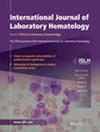Clinical Laboratories Need More Information About Commercially Available Reagents to Prepare for the IVDR: A Call From the ICSH
Abstract
Introduction
According to the new In Vitro Diagnostic Medical Device Regulation (EU) (IVDR) an In Vitro Medical Device (IVD) is considered as a laboratory developed test (LDT) if used outside of intended use. It is therefore essential that the information given by the manufacturer about the intended use is clear, precise, and well documented. For now, the only source of information for laboratories is the instructions for use (IFU). Our primary aim was to analyze the IFU provided by several manufacturers for a large panel of coagulation assays. The secondary objective was to provide a list of minimum information that must be accessible to clinical laboratories.
Methods
We analyzed 195 IFU for the main assays used in European hemostasis clinical laboratories commercialized by 12 manufacturers.
Results
The “intended use” section appears in almost all IFU, but the information given in this section is very heterogeneous. We observed disagreement for each of the assays assessed with some intended uses not supported by guidance or guidelines. Some indications in use by clinical laboratories are not provided by the manufacturers. We only found information on clinical performance for a limited number of assays. For some assays, data are available in the literature but are not reported in the IFU. The matrix and the importance of a pre-test probability are not systematically mentioned.
Conclusions
We urgently request access to the necessary information to know the intended use of a reagent according to the IVDR. We define the minimum information that should be available to laboratories. We call for joint discussions to maintain innovation and ensure the quality, safety, and accessibility of innovative diagnostics.

 求助内容:
求助内容: 应助结果提醒方式:
应助结果提醒方式:


